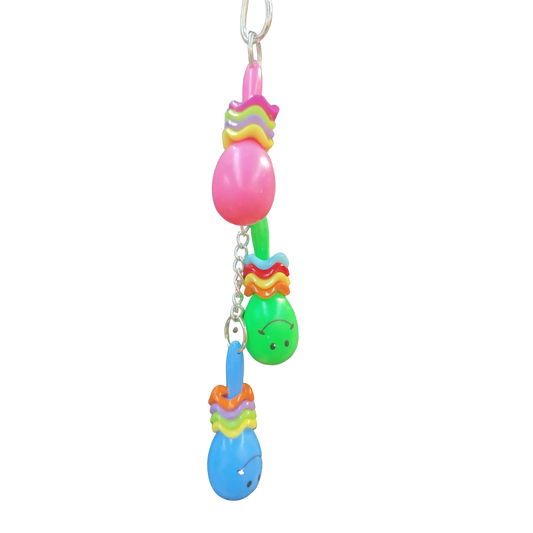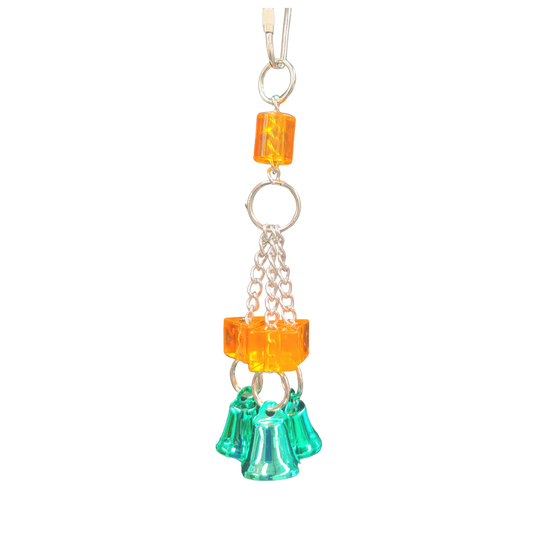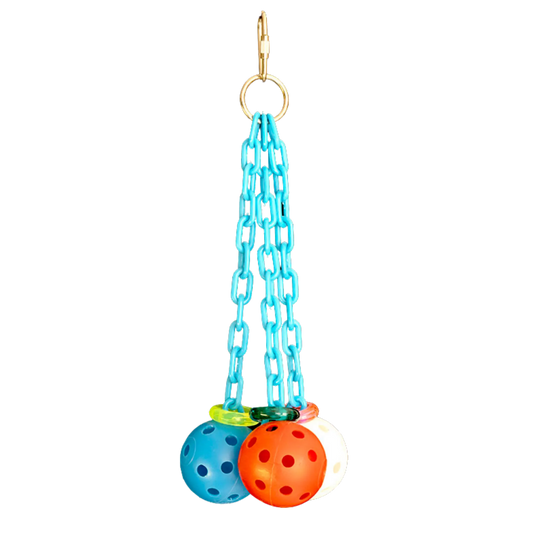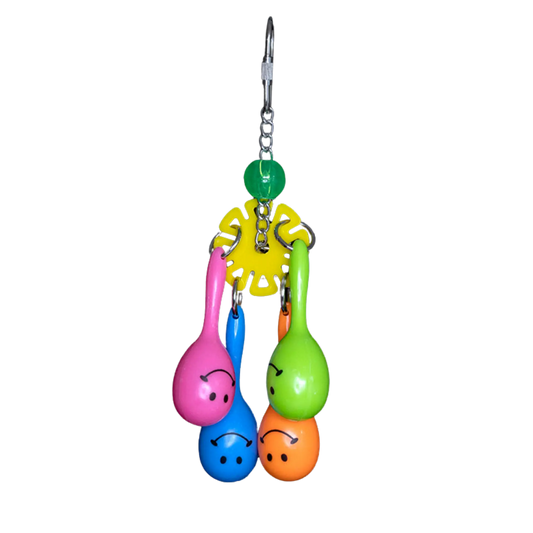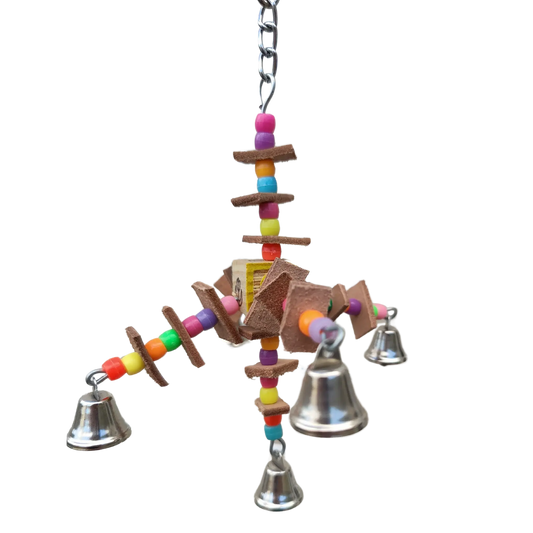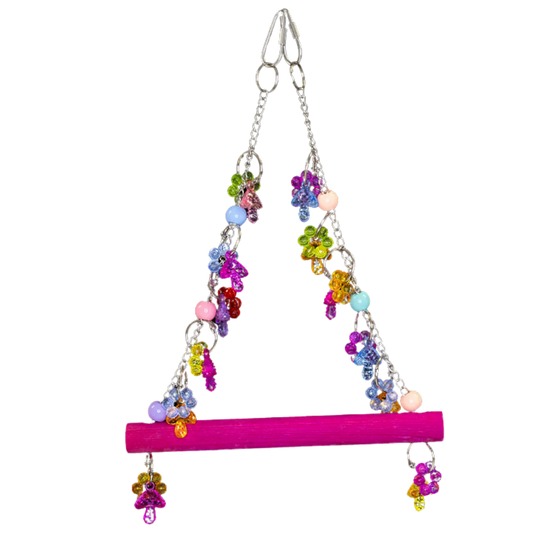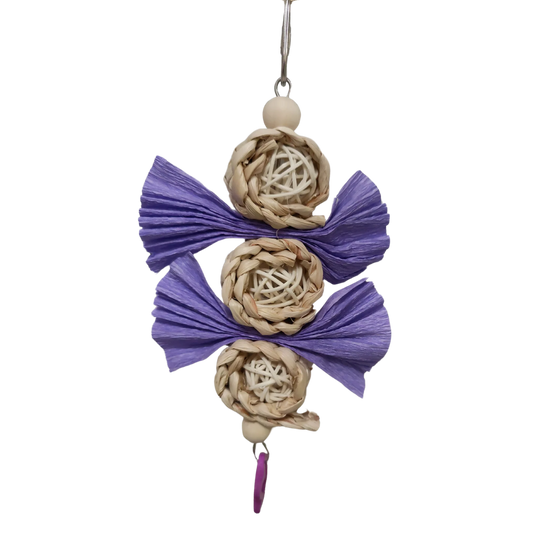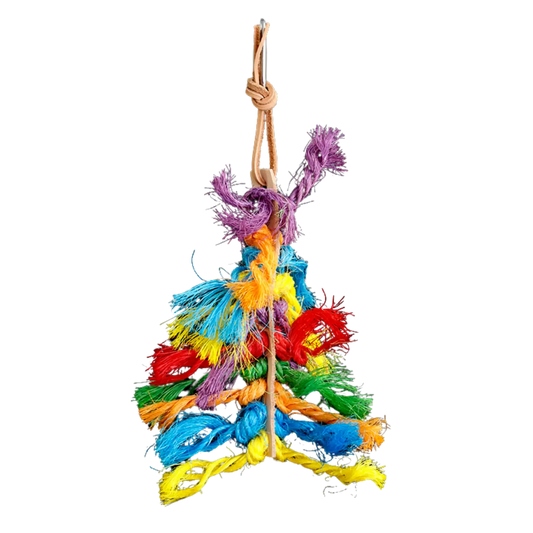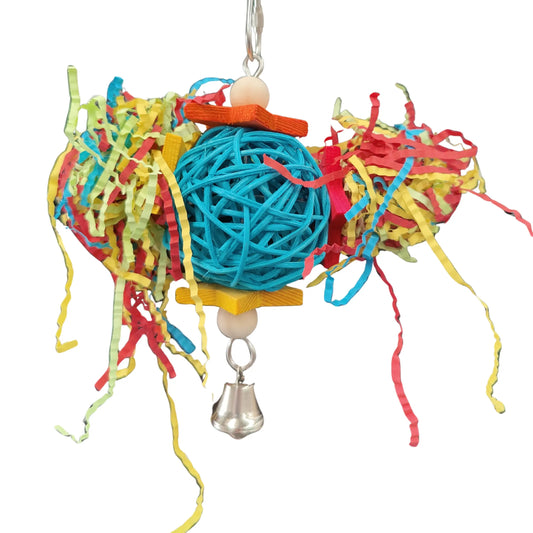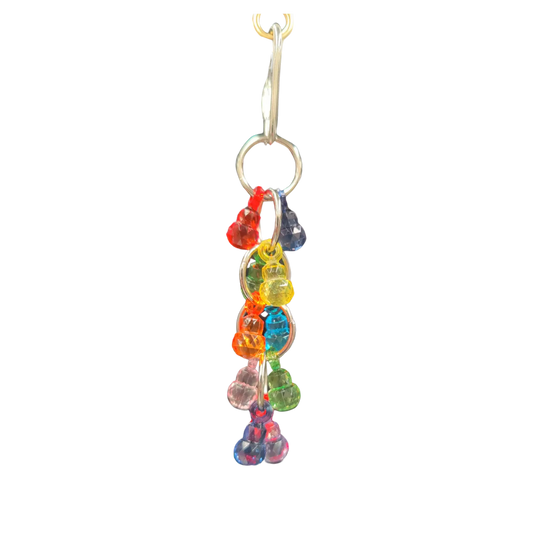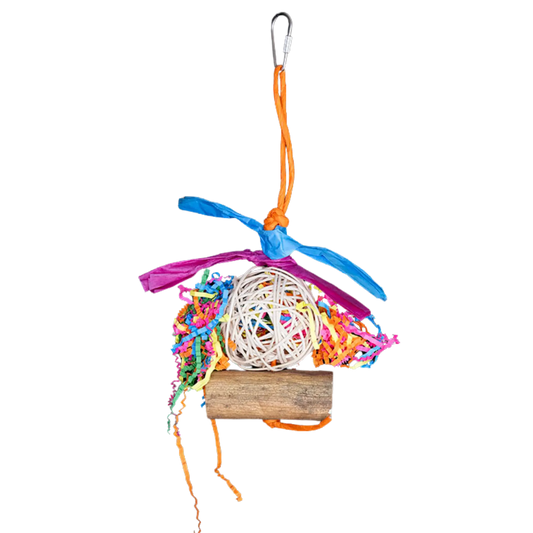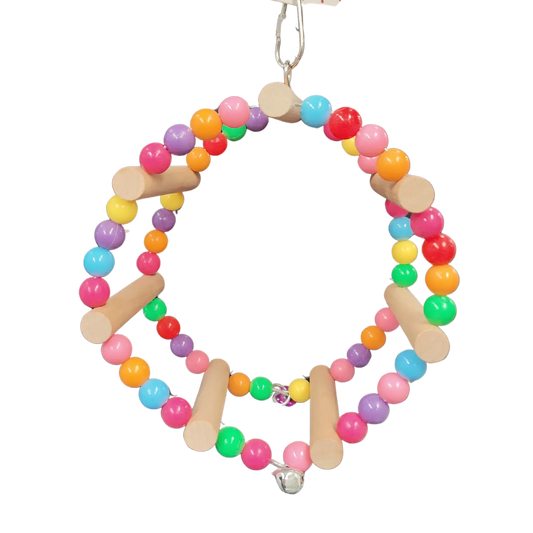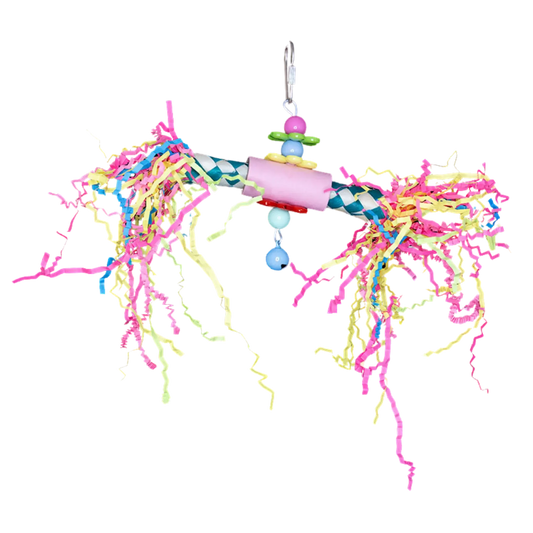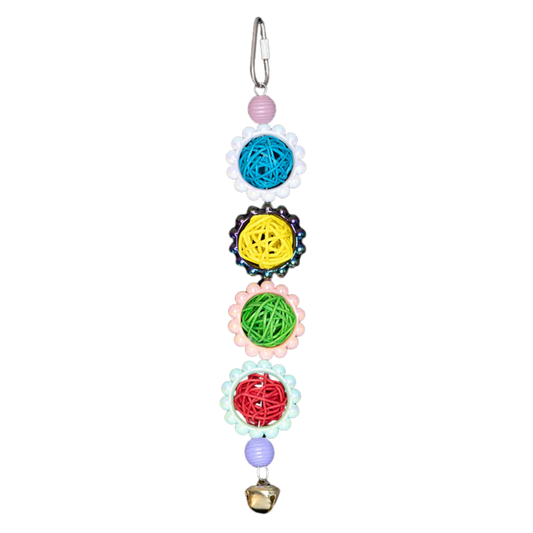Keep your curious budgie busy with our range of safe, fun, and enriching bird toys! At Lou Lou Bells Bird Toys, we design and source high-quality budgerigar toys made to stimulate your bird’s mind and encourage natural behaviours like climbing, chewing, and foraging. From colourful hanging toys to natural sisal chew ropes and mini swings, every piece is thoughtfully crafted to bring joy and enrichment to your feathered friend.
Shop the best bird toys for budgies — Australian owned, bird-safe, and made with love.
Introduction: Budgerigars – The Tiny Parrots with Big Personalities
Budgerigars, affectionately known as budgies, might be small, but their hearts (and personalities) are enormous. These bright, bubbly little parrots are endlessly social, curious, and playful. If you share your home with a budgie, you’ll know they’re always up to something — climbing their cage bars, chattering away, and exploring anything that catches their eye.
But here’s the thing about budgies: they need stimulation. A bored budgie is a recipe for frustration, feather plucking, and even depression. These clever birds are wired to explore, chew, and interact with their environment every single day. That’s where the right bird toys come in — and not just any toys, but safe, high-quality budgie toys that encourage physical exercise and mental enrichment.
At Lou Lou Bells Bird Toys, we’ve spent decades understanding how birds play. We know the difference between a toy that’s “cute” and one that’s genuinely beneficial. So, if you’re wondering which toys are best for your budgie, you’ve come to the right place.
Why Budgies Need Toys: More Than Just Fun
Toys aren’t a luxury for budgies — they’re a necessity. In the wild, budgerigars spend their days flying long distances, foraging for food, and interacting with their flock. In captivity, their world is smaller, so we have to bring the stimulation to them.
- Prevent boredom: Budgies are intelligent creatures. Without enough mental stimulation, they can become bored and frustrated, leading to destructive behaviours.
- Encourage exercise: Toys that involve climbing, swinging, or chewing help your bird stay fit and active.
- Support beak health: Budgies’ beaks grow continuously. Chewing toys made from safe woods or natural fibres helps keep them trimmed and healthy.
- Provide emotional comfort: Toys that move or jingle can mimic the activity and interaction they’d experience in a flock.
- Build trust and confidence: Introducing new toys encourages curiosity and reduces fear of change, helping your bird feel secure and stimulated.
What Makes a Good Budgie Toy?
-
 Bird-Safe Materials: Ensure toys are made from non-toxic, untreated wood, vegetable-dyed rope, sisal, cane, and stainless steel. Avoid anything with zinc, lead, or cheap plastic parts.
Bird-Safe Materials: Ensure toys are made from non-toxic, untreated wood, vegetable-dyed rope, sisal, cane, and stainless steel. Avoid anything with zinc, lead, or cheap plastic parts. - Variety of Textures and Colours: Mix textures like wood, paper, rope, and soft fibres. Bright colours appeal to budgies’ visual curiosity.
- Interactive Features: Toys that move, spin, jingle, or swing keep your bird mentally engaged.
- Size and Proportion: Lightweight, small toys are ideal. Avoid large parrot toys which can be heavy or intimidating.
- Easy to Clean and Rotate: Choose toys that are easy to wipe down or replace. Rotate weekly to keep things exciting.
Types of Toys Every Budgie Should Have
Chew Toys
Budgies love to chew! Toys made from soft woods, cane, or palm leaf provide endless satisfaction and maintain beak health.
Foraging Toys
Foraging toys mimic the experience of searching for food in the wild. Hide treats or paper shreds inside to challenge your bird’s clever mind.
Climbing and Swinging Toys
Budgies adore anything that moves. Swings, ladders, and hanging perches give them exercise while building balance and coordination.
Noise-Making Toys
Budgies are chatterboxes. Toys that include bells or moving parts let them “talk back” and interact safely.
Shreddable Toys
Paper, palm, or seagrass shredders give budgies something safe to destroy while encouraging natural instincts.
How Many Toys Does a Budgie Need?
At least 3–5 toys in the cage at all times is a good rule of thumb — a mix of chewing, climbing, and foraging options. Rotate them every week or two to keep things interesting.
Creating the Perfect Budgie Playground
- Hang a swing near the top for high perch play
- Add chew toys for beak exercise
- Include a ladder or rope perch for climbing
- Place a shreddable toy at mid-level for foraging
- Leave clear space for flying and stretching wings
Safety Tips for Budgie Toys
- Check toys for loose threads or sharp edges
- Avoid small parts that could be swallowed
- Replace damaged toys promptly
- Purchase from trusted suppliers like Lou Lou Bells Bird Toys
Signs Your Budgie Loves Their Toys
- Lots of climbing, chewing, and swinging
- Cheerful chirping during play
- Relaxed posture and bright eyes
- Regular interaction with the toy
Our Top Picks: Best Bird Toys for Budgerigars (2025 Edition)
- Nine Lines Natural Bird Toy: Natural hanging toy for climbing and chewing
- Wood Blocks and Cane Balls Bird Toy: Colourful textures for entertainment and beak health
- Mini Sisal Swing: Lightweight swing for small cages
- Natural Triangle Shredder Bird Toy: Safe shreddable toy for foraging fun
- Hanging Vine Ball Toy: Hide treats for problem-solving play
Final Thoughts: A Happy Budgie is a Busy Budgie
Budgies are tiny companions bursting with personality. Giving them a variety of enriching toys is the best way to keep them healthy, stimulated, and full of life. At Lou Lou Bells Bird Toys, we believe that play is at the heart of every happy bird. Our range of budgie-safe toys will keep your feathered friend entertained, active, and thriving.
Shop the Best Bird Toys for Budgerigars Today: Lou Lou Bells Bird Toys – Natural. Safe. Enriching. Proudly Australian Owned.
Read Also:

